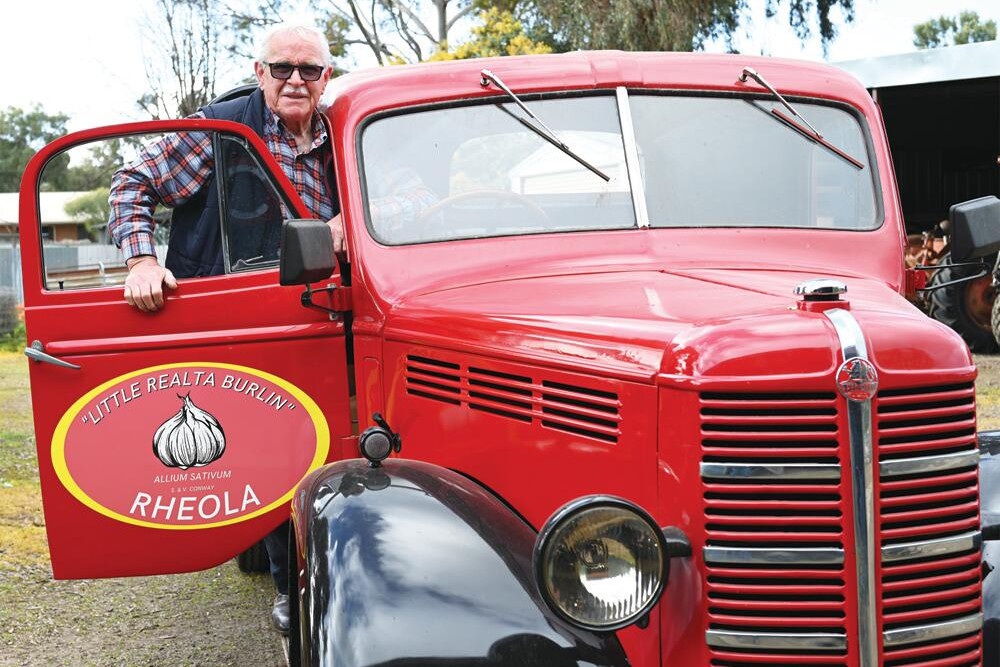General News
9 January, 2024
Summer reading: Listen to that purr
THEY were the trucks of Richard Evans’ childhood, emblazoned with a griffin making their way up hills and through the dales of Wales. Medium-duty Bedford trucks that ventured on British motorways from the 1920s, production adapted to make military...

THEY were the trucks of Richard Evans’ childhood, emblazoned with a griffin making their way up hills and through the dales of Wales.
Medium-duty Bedford trucks that ventured on British motorways from the 1920s, production adapted to make military vehicles during World War Two.
And as Britain edged back to life after war ended in 1945, Bedford trucks were back in production.
One of the first off the production line post-war was the Model M, a version straight from Richard’s childhood and never forgotten for the Welshman who has tinkered with engines most of his life.
For 50 years, Richard has been an Australian and living in Serpentine where he ran the town’s garage and drove the school bus until retirement beckoned just a couple of years ago.
One of the projects waiting on the workbench was an Australian version 1948 Bedford Model M.
“It was a typical barn find,” said Richard of the truck found in a shed at Rheola 20 years ago and now brought back to life.
“Listen to that purr,” he says when starting the engine and letting it idle.
“I started at the front and worked to the back. Stripped everything right back and had it sandblasted.
“Listen to that purr ... a Bedford big six (cylinder),” he says again.
The Bedford had once been owned by the Conways at Rheola. On the doors was painted their farm sign featuring garlic and its Latin name allium sativum.
“When I was having the body painted, I asked that signwriting be preserved. The advice came back that it had been painted on with ordinary house paint, become chalky and couldn’t be saved. So they had a designer replicate the heritage-style sign on the door panels,” he said.
While garlic inhibits and destroys bacteria, fungus, and parasites, as well as lowers blood pressure, cholesterol, and sugar levels, preventing blood clotting and protecting the liver, it has not once deterred Richard from his project and provides company to the griffin that proudly waves the Bedford flag on the truck’s badge. The Bedford M model stayed in production until 1952. Part of the General-Motors group, Bedford would be exported to Commonwealth countries in good numbers after World War Two and even manufactured in Australia.
A partnership with Isuzu saw the Bedford badge dropped in the 1990s.
Richard is still on the lookout for some authentic Bedford parts.
“On the English model, the windscreen folds out. I would really like to add that to this truck. And the driver’s window trim ... on the English model you would push the window down but the Australian model is rolled down.”
Restoration of the Model M has been a love affair for Richard. “I grew up with these old girls ... knew their failings and how to fix them.”
Adapting plans has also been part of the project. “The original plan was to turn the tray into a campervan and for my wife Mary and I to head off in it around the world after retirement,” he said. “I wanted to take it back to Wales for a visit.”
Bedford was the commercial vehicle arm of GM’s British outfit Vauxhalls. The first vehicles to roll off the UK production lines were vans, ambulances and small bus models in 1929, trucks and larger buses appeared two years later.
Like the griffin of Bedfords and Vauxhalls - the mythical creature with the body of a lion and the head and often wings of an eagle - Richard won’t discount the notion of adventures abroad for his Model M just back in his shed, motor nicely purring, receiving its bright red paint job.
“Who knows,” he said as the contented Bedford engine whirs in the background and sends Richard’s eyes darting towards more restoration projects sitting on the retirement workbench.
And one of the first local trips for his Bedford? Back out Rheola way to where the Model M was found in a barn shed.